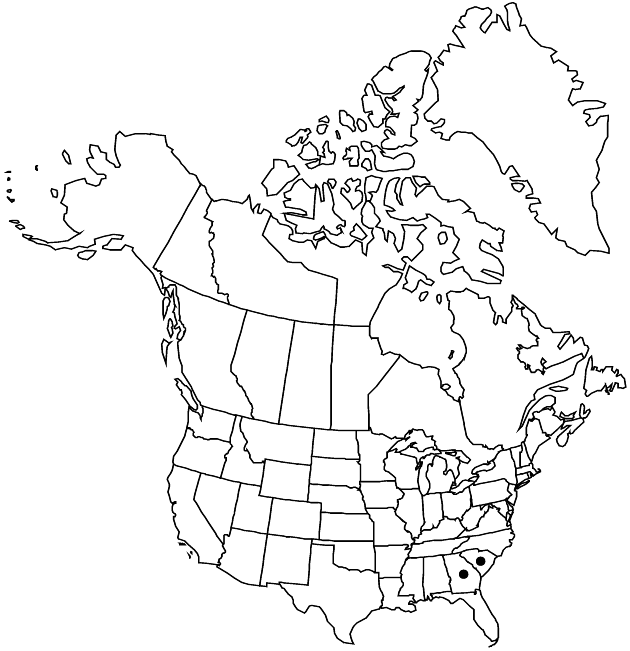Difference between revisions of "Coreopsis delphiniifolia"
in J. Lamarck et al., Encycl. 2: 108. 1786.
FNA>Volume Importer |
imported>Volume Importer |
||
| (6 intermediate revisions by 2 users not shown) | |||
| Line 1: | Line 1: | ||
{{Treatment/ID | {{Treatment/ID | ||
|accepted_name=Coreopsis delphiniifolia | |accepted_name=Coreopsis delphiniifolia | ||
| − | |accepted_authority=Lamarck | + | |accepted_authority=Lamarck |
|publications={{Treatment/Publication | |publications={{Treatment/Publication | ||
|title=in J. Lamarck et al., Encycl. | |title=in J. Lamarck et al., Encycl. | ||
|place=2: 108. 1786 | |place=2: 108. 1786 | ||
|year=1786 | |year=1786 | ||
| + | }} | ||
| + | |special_status={{Treatment/ID/Special_status | ||
| + | |code=E | ||
| + | |label=Endemic | ||
}} | }} | ||
|basionyms= | |basionyms= | ||
| Line 23: | Line 27: | ||
|elevation=ca. 300 m | |elevation=ca. 300 m | ||
|distribution=Ga.;S.C. | |distribution=Ga.;S.C. | ||
| − | |discussion=<p>Plants treated here as Coreopsis delphiniifolia are questionably distinct from C. major. In 1976, E. B. Smith suggested that members of the taxon he called C. ×delphiniifolia may be hybrids or progeny of hybrids involving C. verticillata and C. tripteris and, possibly, C. major. A problem with such an interpretation is that although all of the 35 or so records for C. delphiniifolia in the sense of Smith map at or near known localities for C. major, all but 2 are from well south of the known distribution of C. verticillata and only 3 are from near known localities for C. tripteris.</p> | + | |discussion=<p>Plants treated here as <i>Coreopsis delphiniifolia</i> are questionably distinct from <i>C. major</i>. In 1976, E. B. Smith suggested that members of the taxon he called C. ×delphiniifolia may be hybrids or progeny of hybrids involving <i>C. verticillata</i> and <i>C. tripteris</i> and, possibly, <i>C. major</i>. A problem with such an interpretation is that although all of the 35 or so records for <i>C. delphiniifolia</i> in the sense of Smith map at or near known localities for <i>C. major</i>, all but 2 are from well south of the known distribution of <i>C. verticillata</i> and only 3 are from near known localities for <i>C. tripteris</i>.</p> |
|tables= | |tables= | ||
|references= | |references= | ||
| Line 32: | Line 36: | ||
-->{{#Taxon: | -->{{#Taxon: | ||
name=Coreopsis delphiniifolia | name=Coreopsis delphiniifolia | ||
| − | + | |authority=Lamarck | |
| − | |authority=Lamarck | ||
|rank=species | |rank=species | ||
|parent rank=section | |parent rank=section | ||
| Line 46: | Line 49: | ||
|publication title=in J. Lamarck et al., Encycl. | |publication title=in J. Lamarck et al., Encycl. | ||
|publication year=1786 | |publication year=1786 | ||
| − | |special status= | + | |special status=Endemic |
| − | |source xml=https:// | + | |source xml=https://bitbucket.org/aafc-mbb/fna-data-curation/src/2e0870ddd59836b60bcf96646a41e87ea5a5943a/coarse_grained_fna_xml/V19-20-21/V21_469.xml |
|tribe=Asteraceae tribe Heliantheae | |tribe=Asteraceae tribe Heliantheae | ||
|subtribe=Asteraceae (tribe Heliantheae) subtribe Coreopsidinae | |subtribe=Asteraceae (tribe Heliantheae) subtribe Coreopsidinae | ||
Latest revision as of 20:12, 5 November 2020
Perennials, 30–90 cm. Internodes (± mid stem) 3–8 cm. Leaves: petioles 0–1 mm; blades simple or 3-foliolate, simple blades or leaflets usually narrowly lanceolate to lance-linear, 35–80 × 2–5(–7) mm (seldom lobed, sometimes parted into 2–3+ lance-linear to ± linear lobes). Peduncles 15–45+ mm. Calyculi of 8–10 linear bractlets 3–5(–7) mm. Phyllaries 8, oblong-ovate, 5–6+ mm. Ray laminae 15–25(–30) mm. Disc florets 25–60+; corollas yellow (often drying blackish), 5–6 mm. Cypselae oblong, 4.5–6 mm. 2n = 52, 78, 104.
Phenology: Flowering May–Jul(–Sep).
Habitat: Open woods, barrens, swamps
Elevation: ca. 300 m
Discussion
Plants treated here as Coreopsis delphiniifolia are questionably distinct from C. major. In 1976, E. B. Smith suggested that members of the taxon he called C. ×delphiniifolia may be hybrids or progeny of hybrids involving C. verticillata and C. tripteris and, possibly, C. major. A problem with such an interpretation is that although all of the 35 or so records for C. delphiniifolia in the sense of Smith map at or near known localities for C. major, all but 2 are from well south of the known distribution of C. verticillata and only 3 are from near known localities for C. tripteris.
Selected References
None.
